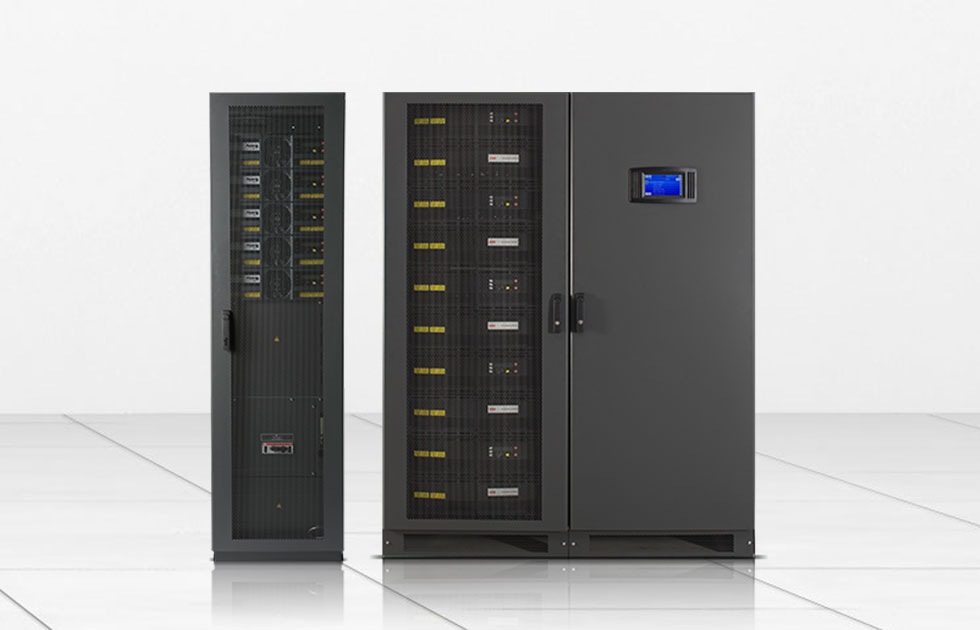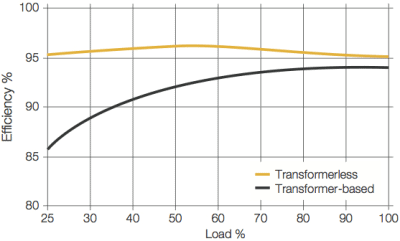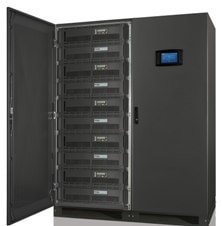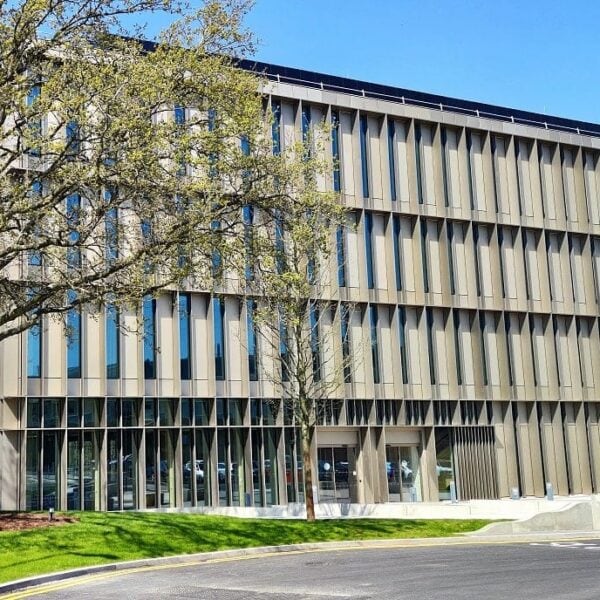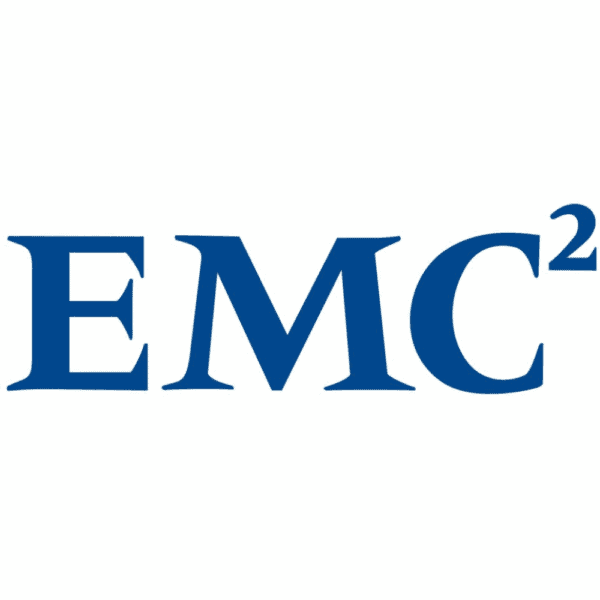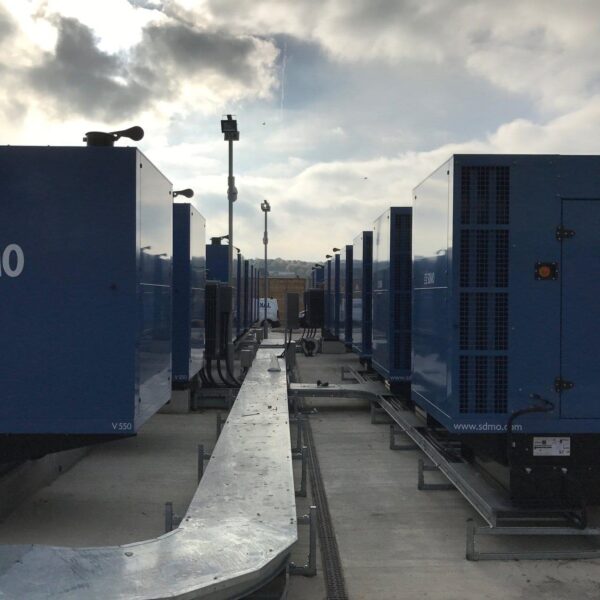Larger enterprises spend millions of euros in energy every year with data centres using huge amounts of electricity.
This reality, set against a background of rising energy costs and growing green legislation suggests that energy efficiency would be data centre operators’ top priority – but this is not in fact the case. While it is certainly a highly significant factor, it is overridden in most operators’ minds by concerns for availability – in today’s always-on world, a data centre cannot go offline.
This means that operators do want to save energy and cut costs, providing they can do so without compromising availability. These twin goals apply to every aspect of the data centre, including the UPS installation. Fortunately modern modular topology allows UPSs to make their contribution to these goals. In this article Ian Jackson., General Manager at KOHLER Uninterruptible Power, a KOHLER company, looks at the technology and the possibilities it offers to data centre managers.
Enterprises in most business sectors are generating a continued expansion in demand for data processing capacity. In the view of UK industry association the Data Centre Alliance (DCA), this is driving growth in the data centre industry. Another industry participant, Virtus Data Centres, has put figures to this – they see the UK & Ireland data centre industry growing by 10% to 20% per annum, depending on market sector.
This growing landscape is populated by data centres of many sizes and types. Most visible are the hyperscale types built specifically for major users such as Amazon, Facebook and Google. Less visible but more ubiquitous data centres range in size from large warehouses to installations covering a few hundred square feet in an office building.
One characteristic shared by all data centres, irrespective of their size or type, is their thirst for energy. According to a report by Bank of America Merrill Lynch, an average data centre is 40 times more energy-intensive than an equivalently-sized office building. This can translate into scenarios where energy represents up to 80% of a data centre’s running costs, as reported by the UK Government-owned UK Green Investment Bank.
Taken together, these factors mean that enterprises of all sizes rely increasingly on data centres that create significant energy costs which they – and their customers – must ultimately absorb. Over time, these costs are likely to grow. Energy prices are on a continuing upward trend, while government legislation, shareholders and customers exert pressure to ‘go green’. These effects will be multiplied as the Internet of Things and Big Data drive the demand for data processing up.
Against this background of large and rising costs, one would imagine that data centre managers and operators would consider reduction of energy costs and improved efficiency as one of their top priorities.
What data centre operators actually want
However this is not in fact the case. In a survey conducted by the Data Center Users’ Group, which is a collective of over 2,000 data centre, IT and facilities managers, the respondents ranked energy efficiency fourth in priority. Availability was the overall, overriding concern. This is partly due to the costs of a data centre outage, which can be huge and run into hundreds of thousands of pounds. However concerns about damage to the enterprise’s reputation are often even greater, and with good reason. A data centre failure that takes out a bank’s ATMs and denies customers access to their accounts is an event that can cause real problems for thousands of users and possibly make the national news headlines.
That’s not to say that operators have no interest in energy saving or green branding. They’re certainly interested in achieving these objectives, but only if they can do so without putting their data centre’s availability at risk. Wouldn’t it be great if possibilities existed that allow energy savings to be made without threatening the facility’s availability?
In fact, such possibilities do exist, and are currently implemented in many data centres. Part of the approach involves using sensors and software to monitor and modify the behaviour of a centre’s IT hardware, power and support equipment, and environmental control. Such strategies are complemented by the availability, efficiency and flexibility of the equipment they are working with. This applies not only to the ICT hardware itself, but also to the UPS and cooling equipment that supports it.
As UPSs tend to be large-scale devices handling high power levels, their performance can have a significant impact on that of the entire data centre. Therefore, installing UPS systems that are efficient while also being highly available and flexible can make a significant contribution to meeting the twin demands of any data centre – high efficiency with uncompromised availability. Accordingly, we can look at the UPS topologies that allow these objectives to be realised.
How modern UPS technology contributes to efficiency and availability goals
One of the most important developments in recent years is the advent of transformerless UPS technology. Facilitated by advances in power semiconductors, it offers several key advantages over earlier transformer-based solutions. Efficiency is improved by up to 5% and remains consistent over the entire load spectrum. Power factor becomes closer to unity and independent of UPS loading, reducing the input current magnitude and allowing reductions regarding cabling and switchgear sizing and possibly reducing electricity costs. Input current harmonic distortion is also reduced.
Fig.1: UPS AC-DC efficiency curves – transformerless v. transformer-based
However, one of the main advantages is the huge reduction in size and weight that transformerless technology allows. The UPS footprint can be halved, while its weight reduces by about 75%. These reductions are so significant because they have facilitated the concept of modular UPSs and a completely new approach to UPS implementation. Instead of a large, single, inflexible floor-standing module, a UPS can be built up as one or more complete, self-contained modules in a 19” racking frame.
This is demonstrated in KOHLER Uninterruptible Power’ KOHLER PW 9500DPA high power UPS. It can start as one frame containing a single 100kW module; the frame can then be scaled vertically in 100kW steps up to its 500kW capacity. If preferred, the system can be run in redundant mode, supporting a load up to 400kW in an N+1 redundant configuration. Horizontal scaling is also possible – this means that up to six frames can be paralleled to provide up to 3 MW power capacity.
The modular design permits UPSs with very high power availability, particularly if they support ‘hot swapping’. A module is hot swappable if it can be inserted or removed from the host UPS frame without depriving the critical load of power or transferring it to the raw AC mains supply. Safe electrical disconnection and isolation without the risk of error-induced damage are also essential criteria. A faulty hot-swappable module can be immediately replaced by a new plug-in unit, so full UPS capacity is quickly restored – the mean time to repair (MTTR) is typically within half an hour of the module’s failure. The faulty module can be repaired off-line and returned to spares stock.
By comparison, if a standalone UPS system fails, it must be isolated from the mains supply and repaired in situ rather than replaced, with fault finding and repair down to component level if necessary. This activity carries a MTTR of typically 6 hours. This difference in MTTR times clearly shows the advantage of using hot swap modular systems when high availability is a priority. Whereas a free-standing UPS system with redundancy could achieve 99.9995% (‘five nines’) availability, this figure improves to 99.9999% (‘six nines’) for a hot-swap modular redundant implementation.
The significance of these figures has been highlighted in work performed by the Uptime Institute (www.upsite.com ). This has generated the term ‘five nines’ to express high availability. It also means that hot-swappable modular systems as in the above example that achieve 99.9999% availability are referred to as having ‘six nines’ availability.
Fig. 2: A high power, fully modular, hot-swappable UPS system
Fully modular, hot-swappable is the best solution
In selecting a UPS system for high availability, it is important to ensure that the chosen solution is fully modular with hot-swappability. This is because some vendors offer systems referred to as ‘fault tolerant’ UPSs to provide lower-cost redundancy. Systems of this type have redundant components but not all of the major components are hot-swappable. Batteries and a subset of the power electronics typically are hot-swappable, but often a high number of critical components, such as the processor electronics, are not. Such designs offer high power availability because they continue to deliver protected power to the load if a component fails. However in this architecture the failure often means that the entire UPS has to be shut down for expensive and time-consuming repairs, causing system downtime and a major inconvenience for data centre managers.
Modern, modular UPS systems offer the highest level of power protection available because all critical components, including batteries, are both redundant and hot swappable. Both planned downtime and unscheduled failure outages are eliminated, while the installation provides the highest levels of power availability for data centre critical loads.
These modular UPS solutions bring commercial as well as electrical efficiency through their inherent flexibility and scalability. There is no need to future proof a data centre with high excess UPS capacity before it’s actually needed. Instead, a modular system can be efficiently configured to the existing load requirement, because modules can be added incrementally and easily when the load does grow – often with no interruption to power.
Conclusion
In this article we have seen how modern, modular UPS systems can help data centre managers achieve the highest possible availability without sacrificing the highest possible levels of power efficiency. These non-exclusive benefits spring from the underlying transformerless technology. This technology has significantly improved UPS efficiency while ushering in the small, lightweight modules that allow hot-swappable, redundant UPS implementations with very high availability.

